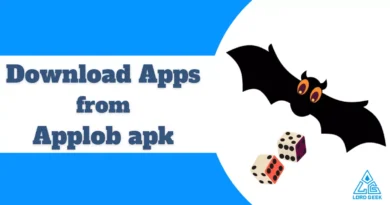Everything you Need to know about Mobile app translation
We exist in a world where digital boundaries are virtually nonexistent, and mobile app translation and localization have become critical. Businesses and app developers looking to appeal to larger, global populations recognize that offering multilingual solutions is no longer optional but a strategic advantage. But what does mobile app translation entail, and why should we care? Here’s your comprehensive guide about it.
When the term mobile app translation comes up, it refers to adapting an app’s language, content, and operations to resonate with a given target audience’s linguistic, cultural, and regional nuances. It’s not just about translating text within the app; it spans adjusting graphics, user interface/user experience (UI/UX) components, and potentially certain features.
Understanding Mobile App Translation and Localization
A global wave sweeping across is driving businesses to expand beyond their traditional geographical boundaries. That’s the world of mobile apps for you – incredibly powerful tools that can reach billions of users worldwide. But language shouldn’t become a barrier to tap into this enormous user base. This is where mobile app translation and localization come into play.
Simply put, mobile app translation implies converting your app’s content into different languages. On the other hand, localization extends beyond mere translation by adapting content, designs, and even functionalities to appeal to different cultural norms and consumer preferences in various regions.
Why do Mobile App Translation and Localization Matter?
Imagine launching your state-of-the-art mobile app only to find that users in key markets are uninstalling because they can’t understand the language. That’s the stone wall mobile app translation that helps you break. Similarly, imagine your customer in Japan or Germany feeling unsettled because your app’s color scheme or images are culturally inappropriate. That’s the pitfall localization helps you avoid.
Mobile app translation and localization lay the groundwork for your app’s success in foreign markets. They make your app user-friendly and culturally respectful, and most importantly, they convert more customers.
| Benefits | Translation | Localization |
| User Experience | Improves usability by making content easy to understand | Improves engagement by making the design and content relatable |
| Market Expansion | Increases user base by making your app available in multiple languages | Grows your brand by adapting to local market preferences |
| Revenue | Boosts in-app purchases by catering to non-English speaking customers | Maximizes customer lifetime value by ensuring cultural resonance |
Incorporating Translation and Localization into Your App Development Process
Translation and localization should be integrated into your app development process to be effective. Including this key element at an early stage ensures that the app is designed and developed in a way that will be easy to translate and adapt for different markets.
- Plan Ahead: Prepare a localization strategy detailing the markets you wish to target, the languages you need, and the cultural nuances to pay heed to. Your plan should also include localizing metadata like app descriptions, screenshots, and keywords for app store optimization.
- Work with Experts: A simple Google Translate would not do. Collaborate with professional translators who are native speakers and understand cultural nuances intimately for your chosen markets. Similarly, involve localization experts to ensure your app’s UI/UX, colors, images, and functionalities are culturally in sync.
- Ensure Consistency: Maintain linguistic and stylistic consistency across all languages. This strengthens your brand image and makes your app appear more professional.
Done correctly, mobile app translation and localization expand your reach and deepen your engagement. It transforms your app from a mere tool into an experience, no matter where your users are.
The Key Steps to Successful Mobile App Translation
Embarking on the journey of mobile app translation isn’t as complex as it might seem at first glance. It could be boiled down into some prime steps you must follow diligently. Let’s start with these steps:
- Identifying Target Markets: Before diving into the translation process, it’s crucial to identify your target markets. This not only determines the languages you’ll translate your application into, but it also influences the localization process, helping you tailor your app to each region’s unique cultural and societal norms.
- Selecting Quality Translation Services: Next, choose a quality translation service provider. Look for expertise in app translations, understanding of your target languages, and familiarity with the localization process. Always ask for a sample translation to evaluate the quality of their work.
- Ensuring Content Adaptability: It’s critical to ensure your app’s content is adaptable to different languages and cultures. This is where localization comes into play. It customizes the app to meet regional norms, expectations, language nuances, and jargon.
Beyond these steps, various other factors must be considered while carrying out this task. To get an idea, let’s present them in the table below:
| Factor | Description |
| App Design Flexibility | Your app’s design should be flexible enough to accommodate text expansion or contraction depending on the language. For instance, translated text from English to German tends to expand by about 35%. |
| Use of Symbols and Icons | Symbolism varies widely across cultures. Always ensure your icons, symbols, or images are universally acceptable or accurately localize them while translating. |
| Legal Considerations | Different countries carry different laws regarding data privacy and security. Make sure to comply with them while translating and localizing your mobile app. |
| Continuous Updates | Translation and localization is an ongoing process, especially if your application is constantly evolving. You’ll need to translate and localize every new update and feature. |
You need to consider these pivotal points while translating and localizing your application. Following these steps and attention to detail will likely lead your app to success in the global marketplace.
Choosing the Right Localization Strategy for Your Mobile App
There is no ‘one size fits all’ approach when choosing a localization strategy for your mobile application. What works best will largely depend on the nuanced specifics of your app and the target market you’re aiming for. Here, we have gathered some key considerations and steps to aid you in making this critical decision.
- Research your target market: The first step to developing a successful localization strategy revolves around understanding your audience. Knowing their language, cultural preferences, shopping habits, etc., will give you insights necessary to target effectively. Refrain from assuming that what worked in your domestic market will work overseas.
- Choose appropriate languages: While it might be tempting to translate your app into as many languages as possible, it’s crucial to prioritize. Localizing a handful of key languages is more beneficial, depending on your target market.
- Professional translation services: While there are automated translation tools available, these often lack the subtlety and understanding of a human translator. Professional translation is key to accurately conveying the nuance of your message across cultural and linguistic divides.
- Test before launching: It’s equally essential to test your translated and localized app in your target market before a wide-scale roll-out. This can allow you to identify any last-minute issues or potential cultural missteps that may have been overlooked.
Choosing the right localization strategy can often mean the difference between global success or failure for your mobile application. It’s a significant investment, but you can reap substantial rewards with research, thoughtful implementation, and the right translation professionals on your side.
Moving forward with mobile app translation and localization, be strategic and deliberate. Ensure your application not only speaks the language of your users but also resonates with their culture and preferences.
How MoxVeda Helps you Localize for your favorite language
You might be wondering how to get your website translated without the headache of tinkering with complex HTML and CSS codes. Look no further! MoxVeda presents a smart solution that does not require website design or code structure changes.
What sets MoxVeda apart is its intelligent system that automatically detects English content on your application and translates it into the language of your choice. But that’s not all! It actively monitors your website to ensure all the translations are continuously updated.
Now, you might think, “That sounds great, but isn’t it going to require ongoing maintenance?” The answer is a resounding no! With MoxVeda, you won’t have to worry about maintenance; they even include localized hosting in their package.
Wondering how compatibility works? No worries because MoxVeda is compatible with all CMS platforms! This makes it an extremely flexible solution that can adapt to your specific requirements. Need more? Check out these features of MoxVeda’s system:
- Machine translation or human-based translation, depending on your needs.
- Ability to select which pages need translation.
- The option to compare machine-generated and human translation – this dual system helps to eliminate errors while providing you with more control.
This might all sound too good to be true, but trust us, it’s as easy as 1, 2, 3… 4! In just four simple steps, your website can be effortlessly translated. That’s the MoxVeda magic for you!

A tech-freak, Jessica has a love for writing articles that shows her love towards the latest technology, Due to her long experience in the technical field, she describes the technical complexities in a very easy way. A web content writer and editor, Jessica is working as a contributor with Lord Geek.



